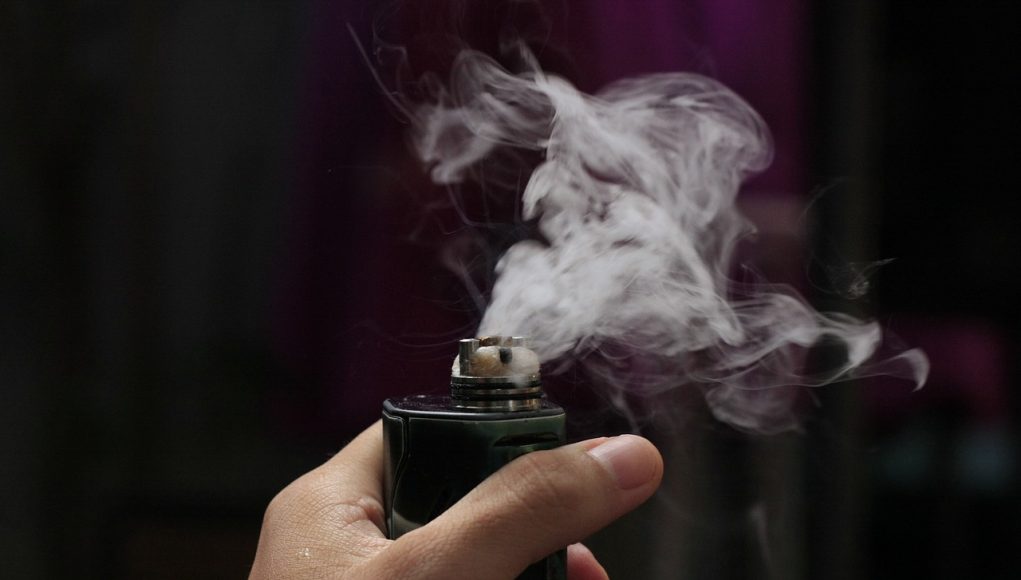A recent Emory University study looked into the potential health risks to children exposed to second-hand vapour. Conducted by researchers at Emory’s Nell Hodgson Woodruff School of Nursing and Rollins School of Public Health, the study used a combination of blood tests, saliva samples, and exhaled breath tests, to measure exposure in children.
The results suggested that children aged 4-12 years who were exposed to second-hand vapour had significantly higher levels of metabolites linked to chemicals in e-liquids compared to their unexposed peers. The research team highlighted that these metabolites can disrupt dopamine levels and cause inflammation and oxidative stress, potentially leading to serious conditions such as diabetes, heart disease, and cancer.
The research was presented at the National Association of Paediatric Nurse Practitioners conference, where the findings were shared with parents in order to raise awareness about second-hand vapour. Lead study author Jeannie Rodriguez, PdD, RN, said that vapes contain dangerous chemicals, and that their vapour can be harmful to anyone exposed to it, especially children.
How is respiratory health affected?
Looking specifically at respiratory problems, a 2022 study revealed a correlation between exposure to second-hand vape emissions and a greater likelihood of experiencing shortness of breath and bronchitic symptoms among young adults. This study suggested that non-vapers who are exposed to vapour indirectly can still suffer from respiratory issues.
Similarly, a study conducted in 2019 indicated that exposure to aerosol from electronic nicotine delivery systems or vapes, can lead to an elevated risk of asthma-related symptoms and asthma attacks in adolescents and young adults. This study underscored that second-hand vapour can pose health risks, particularly to those with pre-existing respiratory conditions.
However, when considered in comparison to smoking, vaping can certainly improve one’s respiratory health. We have long known that vapes contain fewer harmful chemicals than traditional cigarettes, which can lead to reduced irritation and inflammation in the respiratory system. As a result, switching from smoking to vaping can significantly benefit respiratory conditions like asthma and chronic obstructive pulmonary disease (COPD).
A 2016 study published in Nicotine & Tobacco Research found that smokers who switched to vaping experienced improved respiratory health, with decreased coughing and better lung function. Similarly, a 2019 study from BMC Pulmonary Medicine reported that COPD patients who switched to vaping experienced fewer exacerbations and hospitalizations, suggesting that vaping can be a less harmful alternative for those with respiratory conditions.
The effect of vapour on air quality
A 2021 study reported that particles from exhaled vape emissions can linger in indoor air and blend with the surrounding environment. These particles can disperse and increase their concentration beyond 3.6 meters from the initial vaping point.
Similarly, in a study from 2020 researchers analyzed the air quality in vape shops, examining the levels of vape-related chemicals during operating and non-operating hours. They found that the concentrations of nicotine, formaldehyde, and acetaldehyde were three to four times higher when the shops were open compared to when they were closed.
Other Studies Indicate The Risks from Second-Hand Vape Exposure Are Negligible
On the other hand, other studies have indicated that the risk from second-hand vape exposure may be significantly lower than the risks associated with second-hand smoke from traditional cigarettes. Unlike conventional cigarette smoke, which contains a large number of harmful chemicals and carcinogens, the vapour from e-cigarettes is primarily composed of water vapor, propylene glycol, glycerin, flavourings, and nicotine.
For instance, the study “Characterisation of the Spatial and Temporal Dispersion Differences between Exhaled e-cigarette mist and Cigarette Smoke,” published in the journal Nicotine & Tobacco Research, found that indoor air quality in environments where vaping occurred was not significantly compromised, with levels of particulates and other harmful substances remaining within safe limits.
For both e-cigarettes and regular cigarettes, the particle concentrations registered following each puff were in the same order of magnitude. However, for vaping products the particle concentration returned to background values within a few seconds, whilst for cigarettes it increased with successive puffs, only returning to background levels after 30-45 minutes.
Similarly, the study “Peering through the mist: systematic review of what the chemistry of contaminants in electronic cigarettes tells us about health risks,” found no evidence that vapour occurs at levels that would be considered risky or unsafe if they were in a workplace setting. The research team reviewed both peer-reviewed studies and “grey” literature, gathering over 9,000 observations of varying quality. They went on to compare these observations to the most commonly accepted workplace exposure standards, known as Threshold Limit Values (TLVs). This comparison was made using “worst-case” scenarios, considering both the chemical content of e-cigarette aerosol and liquids as well as the behaviour of vapers.
The study found no evidence that e-cigarette users were exposed to contaminants at levels that would be considered risky or unsafe if they were in a workplace setting. Most of the projected exposures were significantly below the TLV thresholds, with the majority being less than 1% of the TLV. Even for chemicals like acrolein and formaldehyde, the predicted exposure levels were typically below 5% of the TLV. When considering vapour as a mix of different contaminants, the analysis suggested that exceeding half of the TLV for such mixtures was unlikely.
The Effects of Secondhand and Thirdhand Smoke Exposure on Human Health












